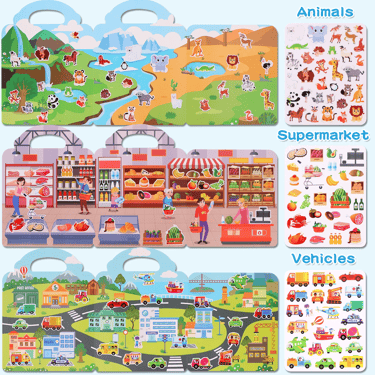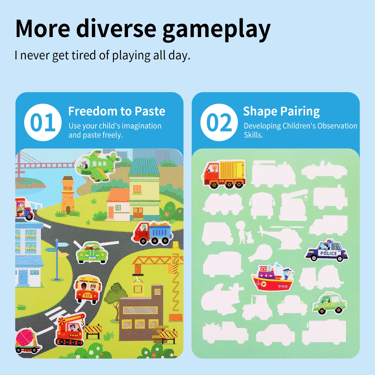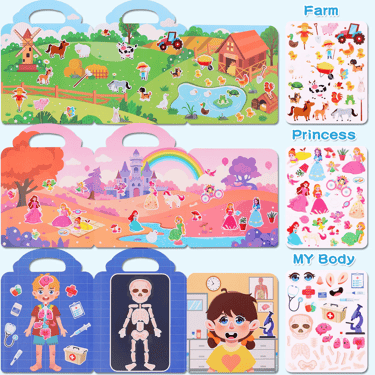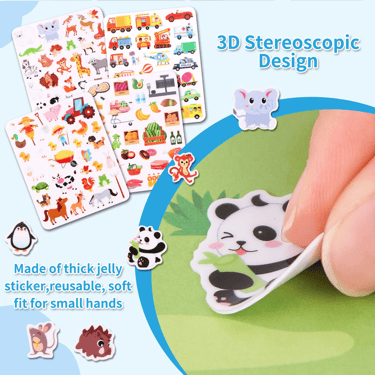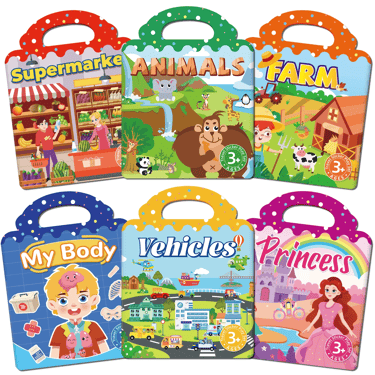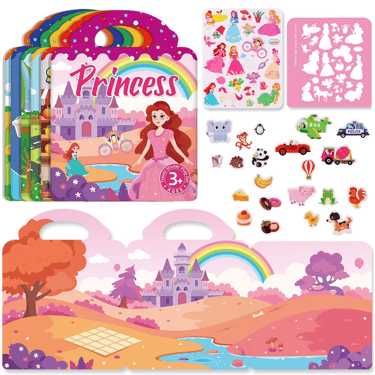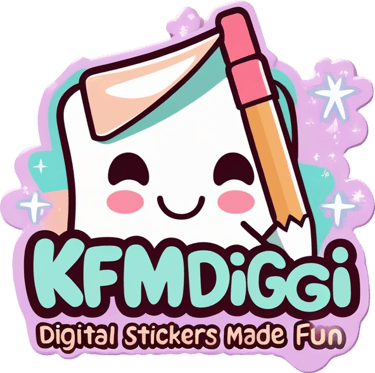How to Express Yourself Through Custom Stickers: A Beginner's Guide
How to Express Yourself Through Custom Stickers: A Beginner's Guide
7/3/20258 min read
How to Express Yourself Through Custom Stickers: A Beginner's Guide
Since 1935, stickers have been one of the simplest ways to express yourself through visual means. I've noticed that these small adhesive designs do much more than just decorate our belongings—they tell our stories without words. Not only are stickers an affordable form of creativity and individuality, but they also serve as conversation starters when people ask about them.
By simply looking at the stickers adorning someone's laptop, water bottle, or car, we can immediately understand their interests, beliefs, and brand preferences. What does it mean to express yourself through stickers? In this guide, we'll explore how to meaningfully represent your personality through custom designs, regardless of your artistic background. Whether you're wondering how to express yourself more authentically or searching for new ways to express yourself visually, stickers offer an accessible entry point into the world of personal expression that requires no special training or expensive equipment.
What Does It Mean to Express Yourself Through Stickers?
Looking at someone's stickered belongings feels like peeking into their personal world. These tiny adhesive designs transform mundane objects into living canvases that broadcast who we are without saying a word.
Stickers as a form of personal identity
Whenever we decorate our laptops or water bottles with stickers, we create timelines of our interests and affiliations. People become easily identifiable through this form of self-expression, as stickers simplify our identity into visual categories. Our modern devices serve as extensions of ourselves, and consequently, the stickers we choose become fragments of our identity that we carry everywhere.
In fact, college students frequently use stickers to showcase their personality and distinguish their belongings in environments where everyone owns similar items. Many report worrying about what others will think of their sticker choices, highlighting how deeply these small designs connect to our sense of self.
Why stickers resonate with people
Stickers offer something increasingly rare in our digital world—a physical, tangible connection. They feel like small gifts that create loyalty in ways screens cannot. The act of peeling and applying a sticker provides immediate satisfaction and releases dopamine, creating a positive emotional experience.
Moreover, stickers evoke powerful nostalgic feelings, reminding us of childhood collecting and trading experiences. For younger generations specifically, customization has become everything—Generation Z sees stickers as mood boards that move with them, turning ordinary objects into personal branding opportunities.
Beyond individual appeal, stickers create community connections:
· They serve as conversation starters with like-minded people
· They represent membership in groups or movements
· They visually signal shared interests and values
· They provide accessible entry into artistic expression
The psychology behind visual self-expression
The psychology behind our attachment to stickers runs surprisingly deep. Stickers tap into fundamental human needs for belonging, self-expression, and connection. Through careful selection of designs, we craft visual narratives that reinforce our connections to passions and interests.
Furthermore, stickers provide empowerment—giving people a voice without needing to speak. They function as social signals, motivators, and symbols of personal values. This explains why stickers remain deeply rooted in protest culture, skateboarding, and activism—communities where visual identity carries significant weight.
Psychologically, decorating personal items with stickers fulfills our desire to stand out while simultaneously signaling group membership. Each sticker becomes a tiny anchor for memory, emotion, and personal narrative—making the ordinary extraordinary and the mass-produced uniquely ours.
A Brief History of Stickers and Their Cultural Role
The humble sticker has traveled a remarkable journey from utilitarian labels to powerful tools of self-expression. Throughout decades of cultural evolution, these adhesive images have shaped how we communicate our identities to the world around us.
From political campaigns to pop culture
The 1960s marked a turning point as stickers entered the political arena, becoming emblematic of various social movements that were sparking to life. Political campaigns quickly adopted stickers to promote candidates and spread messages, with many Democratic candidates utilizing union-printed designs that featured the distinctive "bug" or union logo—particularly important in pro-union states.
Meanwhile, beyond politics, the Italian company Panini launched collector sticker books featuring soccer stars , establishing a cultural phenomenon where people would meet to swap and trade their collections. Education systems embraced stickers too, as teachers began rewarding students with colorful stickers for achievements, transforming ordinary schoolwork into exciting pursuits.in the late 1960s
The 1980s elevated stickers into forms of personal branding. Music enthusiasts plastered their possessions with band stickers—everything from Madonna to Metallica—creating visual representations of their personalities. Subsequently, the 1990s exploded with sticker innovation: puffy varieties, glow-in-the-dark options, scented designs, and holographic creations transformed flat images into multi-sensory experiences.
The evolution of sticker materials and printing
Before Stan Avery's groundbreaking invention of , advertisements were typically printed on metal and physically wired to car bumpers. Eventually, Forest Gill combined self-adhesive technology with day-glow paint to create the first modern bumper stickers, which by the 1960s appeared on vehicles throughout North America.self-adhesive stickers in 1935
Materials gradually evolved from simple paper labels to specialized compositions like "eggshell stickers"—a mixture of paper and plastic that protects street art from the elements. As technology advanced, sticker production became more accessible. The DIY culture empowered bands to independently produce and distribute their stickers as promotional tools.
Stickers in digital and social media age
Presently, stickers have transcended physical limitations to conquer digital spaces. On Facebook Messenger alone, users send more than 380 million stickers daily—16 times more than GIFs. Notably, 36% of people ages 18-34 believe their thoughts and feelings are better communicated through images than words.
Celebrity entrepreneurs recognized this potential, with Kim Kardashian's "Kimoji" sticker collection reportedly grossing one million dollars per minute upon its initial release. Digital stickers effectively bridge the gap between verbal and non-verbal communication that can be lost in text-based exchanges.
The boundary between physical and digital stickers continues to blur as technology advances. NFC stickers can transform ordinary objects into smart devices, whereas augmented reality stickers bring flat images to life through smartphone screens. Thus, stickers remain a vital means through which we express ourselves across both tangible and virtual realms.
How to Design Your First Custom Sticker
Creating your own custom sticker is an exciting way to transform your ideas into tangible art that represents who you are. This step-by-step guide will help you navigate the process from concept to finished product.
Finding your message or theme
Every great sticker starts with a clear purpose. Before diving into design, ask yourself: What is this sticker for? Who is it meant to appeal to? Where will it be used? Understanding your audience helps tailor your design for maximum impact.
Your sticker should reflect your personal brand identity. Consider what message you want to convey—are you aiming for something playful, professional, or somewhere in between? Browse Pinterest or Instagram for inspiration and create a mood board to narrow down your style preferences.
Choosing colors, fonts, and imagery
Colors evoke specific emotions and responses. Blue conveys trust, green represents nature, and yellow suggests creativity. For sticker design, limit yourself to a cohesive color palette that aligns with your message. Use contrasting colors to ensure text or critical elements are easily readable.
For fonts, readability is paramount. Limit yourself to 1-2 complementary fonts and avoid overly decorative options unless they're large enough to read easily. Sans-serif fonts often convey a friendly, casual tone, while serif fonts present a more formal, serious appearance.
Keep imagery simple and bold—intricate details can get lost on small stickers. High-resolution images (300 DPI minimum) ensure your stickers look crisp and professional.
Tools and platforms for beginners
Several user-friendly platforms make sticker design accessible:
· Canva: Perfect for beginners with drag-and-drop functionality and thousands of templates
· Adobe Express: Offers professionally designed templates with easy customization options
· GIMP: A free Photoshop alternative for more detailed designs
· Procreate: Ideal for hand-drawn illustrations on iPad
Tips for making your design stand out
Simplicity is key—cluttered designs confuse viewers. Focus on one clear focal point that draws attention. Consider unique shapes beyond traditional circles and squares; die-cut stickers follow your design's outline for added visual interest.
Establish visual hierarchy by varying sizes and weights to guide viewers to the most important information first. Leave adequate whitespace so your design elements can "breathe," and ensure high contrast between background and foreground elements.
Printing options: DIY vs professional services
DIY printing requires investment in equipment (high-quality inkjet printer, cutting machine) and materials (vinyl, laminate). Although initially expensive ($100-$400 for printers, $250-$400 for cutting machines), it provides complete control over the process.
Alternatively, professional printing services offer higher quality, more finishing options (matte, glossy, holographic), and save significant time. Many online platforms let you upload designs and receive finished stickers without handling production details. For beginners, ordering a small test batch allows you to evaluate quality before committing to larger quantities.
Ethical and Practical Tips for Using Stickers
Expressing yourself through stickers comes with responsibilities that extend beyond the design process. As these sticky expressions of identity become part of shared spaces, understanding their impact helps ensure your message resonates positively.
Where to place your stickers responsibly
First thing to remember when placing stickers is to identify suitable locations where they won't obstruct traffic signs or create safety hazards. Instead of permanent adhesives, consider using removable options or even magnets that allow for easy removal without damaging surfaces. For your own belongings, keep in mind that a hairdryer can help loosen stubborn adhesive during future removal.
Avoiding offensive or divisive content
In essence, what seems funny or acceptable to you might offend others. Above all, avoid designs with religious, sexual, or racial connotations that could potentially upset viewers. Getting a second opinion on your designs often reveals blind spots in your perspective. Additionally, ethical sticker designers refrain from creating anything that encourages violence, hate speech, or prejudice.
Eco-friendly sticker materials
The environmental impact of your self-expression matters too. Thankfully, the market now offers stickers made from 100% post-consumer waste paper that are curbside recyclable with regular paper products. Some manufacturers provide stickers with recycle-compatible adhesives that ensure paper stickers remain friendly additions to recycling streams. Coupled with non-toxic, Greenguard certified inks that produce virtually odorless prints with low volatile organic compounds, these options allow for guilt-free expression.
Respecting public and private spaces
Importantly, placing stickers on public or private property without permission is generally illegal. Many municipalities have specific ordinances against "sticker bombing" public property, and violators may face fines. Instead, look for community bulletin boards in cafes, libraries, and other venues that welcome such additions. In some establishments, stickers have become part of the décor, providing legitimate showcase opportunities for your creative expression.
Conclusion
Custom stickers truly stand as one of the most accessible and meaningful forms of self-expression available today. Throughout this guide, we've seen how these small adhesive designs serve as powerful visual communicators of our identities, interests, and values. Therefore, whether decorating a laptop, water bottle, or notebook, each sticker becomes a fragment of your personal story.
The journey from political campaigns to digital messaging platforms shows how stickers have remained relevant across generations and technological shifts. Additionally, their psychological impact runs surprisingly deep—fulfilling our fundamental needs for belonging while simultaneously allowing us to stand out as individuals.
Creating your own stickers doesn't require artistic expertise. You simply need a clear message, thoughtful design choices, and the right tools. Platforms like Canva and Adobe Express make the design process approachable for beginners, while professional printing services handle the technical aspects of production.
Responsibility matters when expressing yourself through stickers. Consequently, choosing eco-friendly materials, respecting public spaces, and considering how your designs might affect others should guide your creative decisions. These small considerations ensure your self-expression remains positive and respectful.
Stickers will undoubtedly continue evolving alongside technology. Nevertheless, their core purpose remains unchanged—they transform ordinary objects into personal canvases that tell our stories without words. The next time you see a stickered laptop or water bottle, remember you're looking at someone's visual autobiography.
The beauty of sticker expression lies in its accessibility. Unlike other art forms that demand years of training, anyone can select or create stickers that represent their authentic self. This democratic quality makes stickers a uniquely powerful medium for personal expression.
My hope is that this guide inspires you to explore stickers as a form of self-expression. After all, every blank surface offers an opportunity to showcase who you are and what matters to you—one small, sticky statement at a time.
